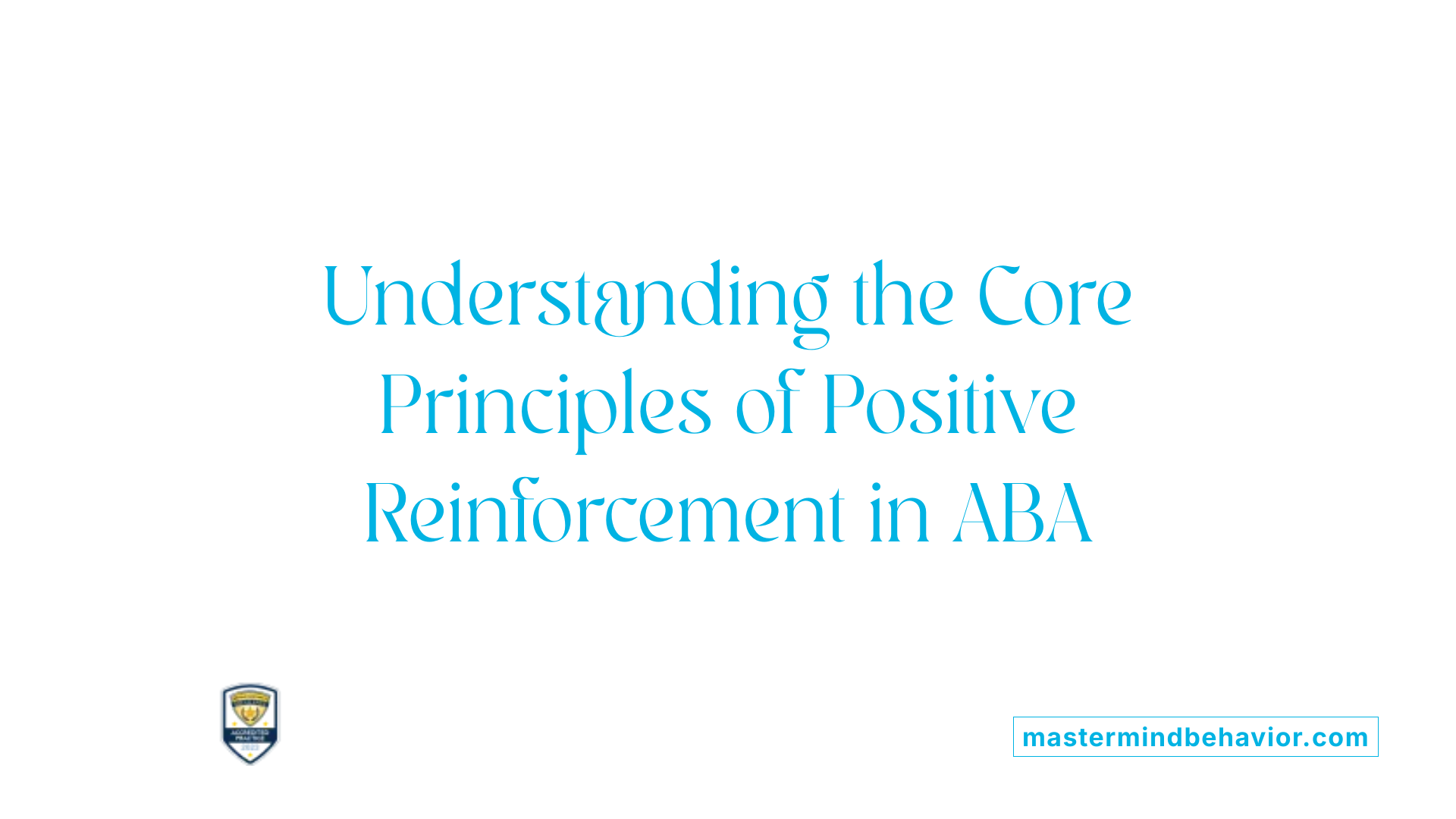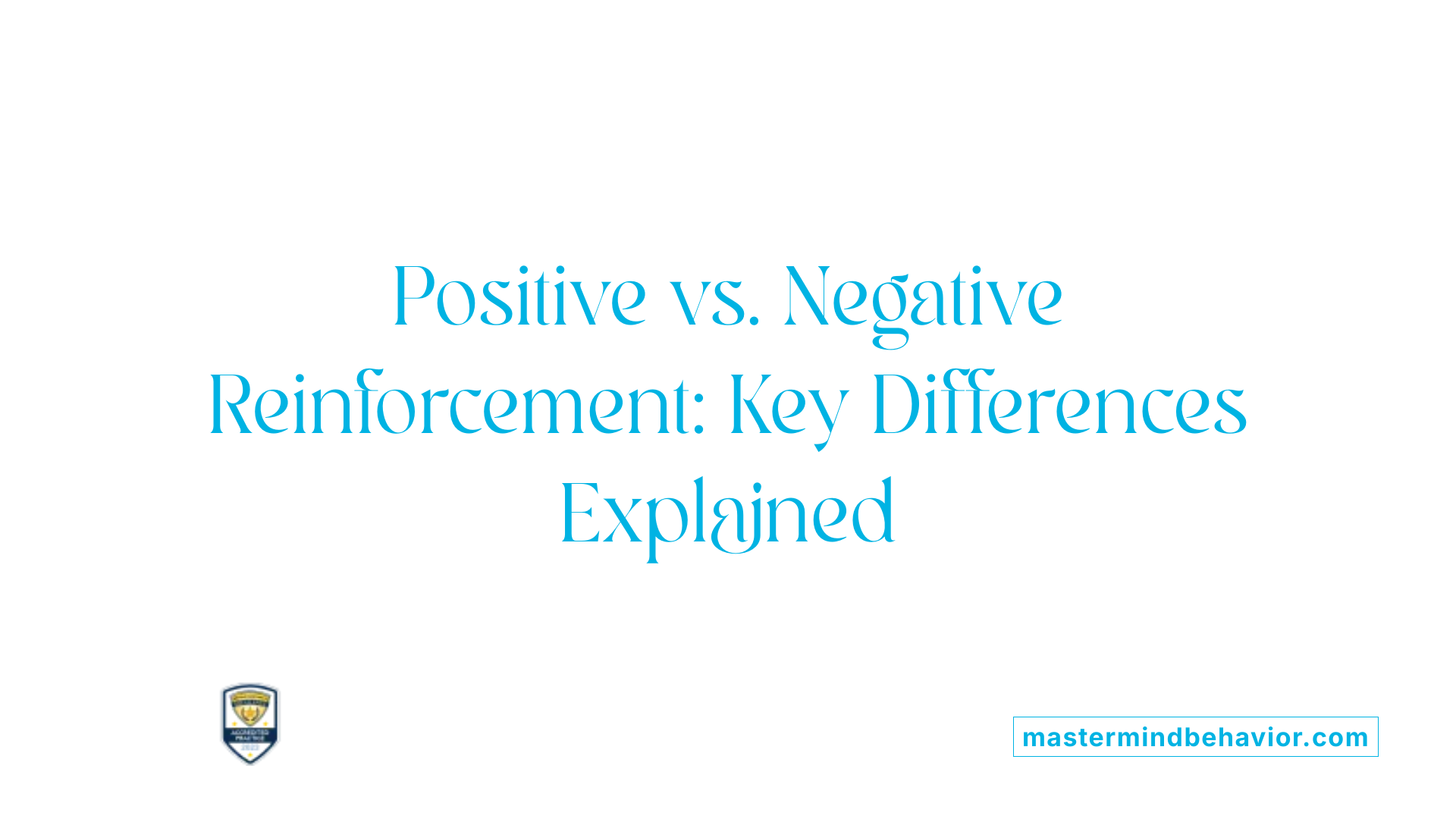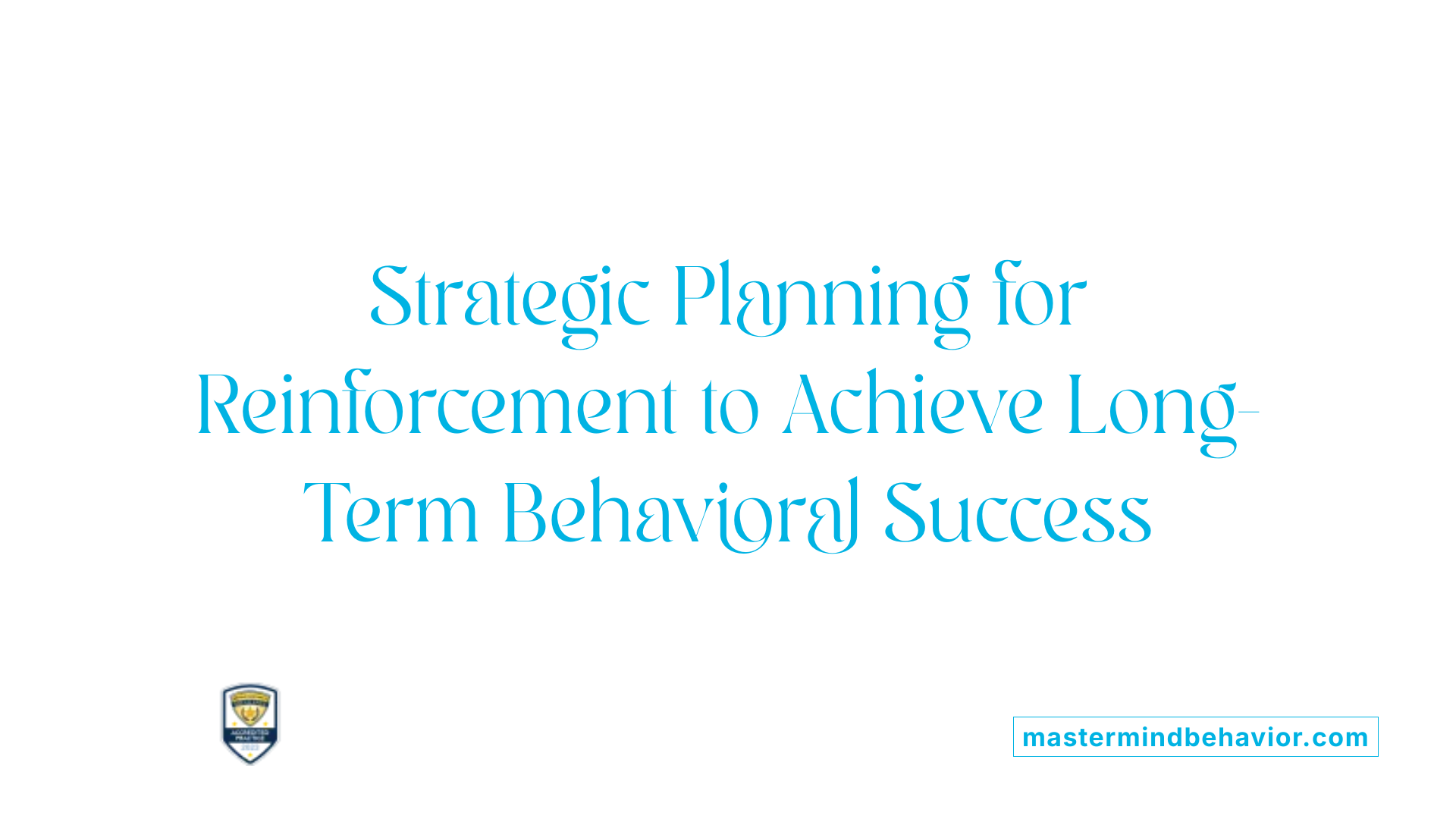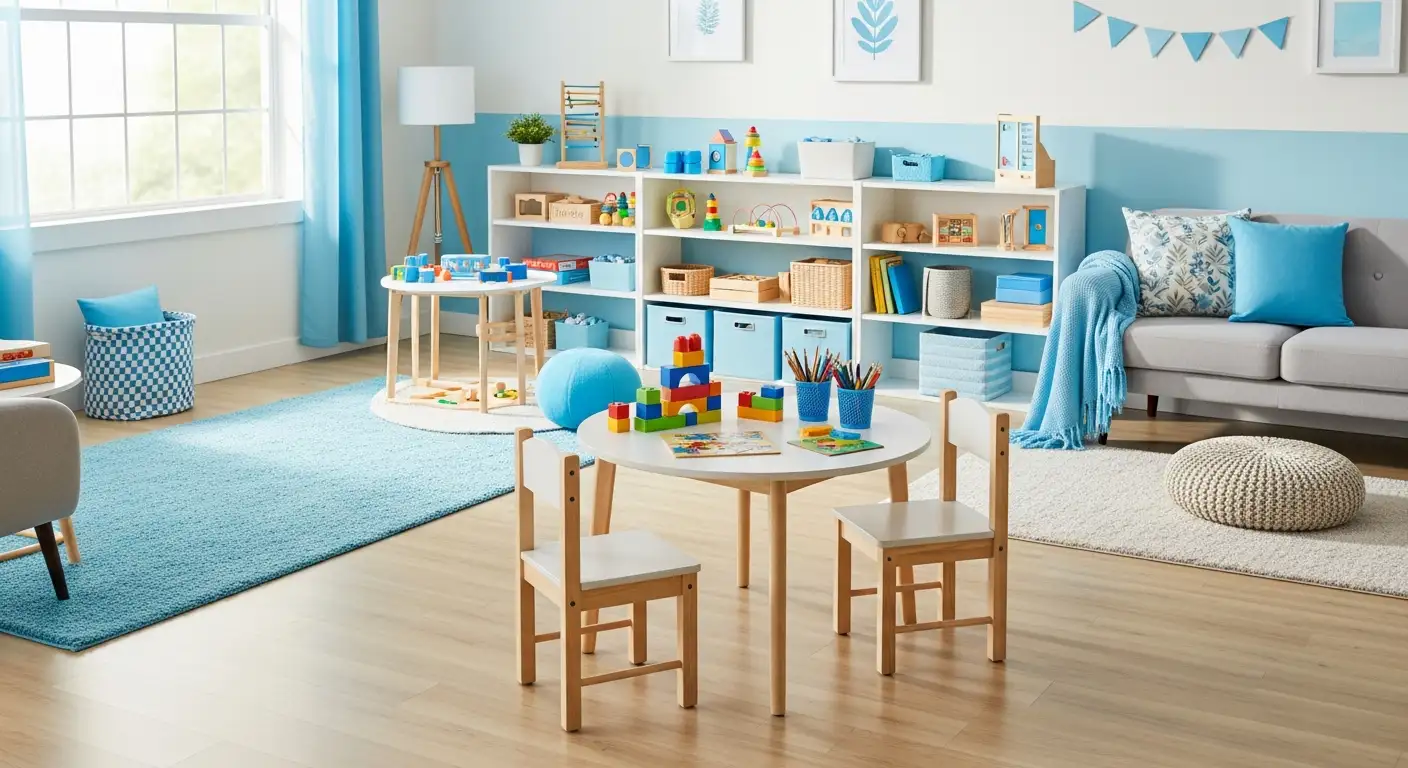Creating a Positive Reinforcement Strategy for ABA Therapy

Building Effective Positive Reinforcement Strategies in ABA Therapy
Positive reinforcement stands at the core of ABA therapy, serving as a powerful tool to motivate children, develop new skills, and foster lasting behavioral change. This article explores fundamental principles, strategic implementation, and practical approaches to creating personalized reinforcement plans that enhance therapeutic outcomes.
Fundamentals of Positive Reinforcement in ABA Therapy

What are the principles and fundamentals of positive reinforcement in ABA therapy?
Positive reinforcement is a central strategy used in ABA (Applied Behavior Analysis) to encourage desirable behaviors. It works by presenting a pleasant or valued stimulus immediately after a specific behavior occurs, which increases the likelihood that the behavior will happen again in the future.
This technique focuses on reinforcing what the individual is doing correctly. By doing so, it helps children develop new skills, build confidence, and reduce challenging behaviors such as tantrums. The reinforcement must be personalized, as what motivates one person might not motivate another. Common reinforcers include praise, tangible items like toys or snacks, preferred activities, and natural rewards that come directly from the behavior itself.
Reinforcement is often delivered according to a structured schedule, which can be continuous (every time the behavior occurs) or intermittent (sometimes the behavior is reinforced). These schedules are gradually faded over time to promote independence and ensure behaviors are maintained without constant external rewards.
Overall, positive reinforcement is an effective, adaptable approach used in ABA therapy to motivate children, support their learning, and foster lasting behavioral improvements. It underscores the importance of selecting reinforcers that are meaningful to the individual and applying these consistently to successfully shape behavior.
Developing Tailored Reinforcement Strategies for Behavioral Improvement

How can practitioners develop effective positive reinforcement strategies for behavioral improvement?
Creating effective reinforcement strategies in ABA therapy starts with understanding the individual child's preferences and motivators. Practitioners observe what items or activities naturally motivate the child—these can be tangible rewards like toys or snacks, social rewards like praise or hugs, or even natural outcomes of the behavior, such as feelings of accomplishment.
Once identified, reinforcement should be delivered immediately after the target behavior. This immediacy helps establish a clear connection between the behavior and the reward, increasing the likelihood that the behavior will happen again. Consistent timing is vital to reinforce learning effectively.
Implementing differential reinforcement techniques such as Differential Reinforcement of Alternative behaviors (DRA), Differential Reinforcement of Incompatible behaviors (DRI), or Differential Reinforcement of Other behaviors (DRO) helps promote desirable behaviors while reducing challenging ones. These methods focus on reinforcing more appropriate responses and discouraging negative behaviors by withholding reinforcement when undesired actions occur.
Choosing the right reinforcement schedule is also essential. For example, starting with continuous reinforcement—offering a reward after every correct response—can establish the behavior. Gradually shifting to interval or spaced schedules helps sustain the behavior over time, even without constant reinforcement.
Monitoring progress meticulously allows practitioners to track what reinforcers work best and whether behaviors improve. Data collection and regular review enable timely adjustments to strategies, ensuring they remain effective as the child's preferences or behavioral needs evolve.
Ultimately, tailoring reinforcement plans to each child's specific needs, preferences, and the underlying reasons for their behaviors increases the chance of long-term success. A personalized approach not only motivates children effectively but also promotes lasting behavioral improvements.
Implementing Reinforcement Techniques to Promote Desired Behaviors

How do you implement reinforcement techniques to encourage desirable behaviors?
Implementing reinforcement techniques effectively involves a thoughtful approach to selecting, delivering, and adjusting incentives. First, it is crucial to identify stimuli that are meaningful and motivating for the individual child. These can include tangible items like preferred toys or snacks, social praise such as verbal admiration or high-fives, activity-based rewards like extra playtime, or natural consequences that naturally follow the behavior.
Once the reinforcers are selected, providing them immediately after the desired behavior is essential. This immediacy builds a clear association between the behavior and the reward, increasing the likelihood of repetition. For example, praising a child right after they successfully turn off a device reinforces the behavior effectively.
To keep motivation high and prevent habituation, variability in reinforcement is important. Alternating different types of rewards, such as mixing praise with tangible items or preferred activities, helps maintain the child's interest. Consistency in delivery is vital; reinforcement should be provided every time the targeted behavior occurs at the beginning, then gradually less frequently as the behavior becomes more ingrained.
Using differential reinforcement strategies further enhances effectiveness. For instance, reinforcing alternative or incompatible behaviors while withholding reinforcement for undesirable actions directs the child's focus towards positive actions. Regularly monitoring progress through data collection allows caregivers and therapists to fine-tune their approaches.
Adjustments may include changing the type or schedule of reinforcement based on the child's response, ensuring that incentives remain effective and satisfying. Importantly, negative behaviors should not be reinforced; instead, the focus remains on encouraging and strengthening positive behaviors.
In summary, a carefully planned reinforcement strategy that combines immediate, variable, and personalized rewards, along with ongoing monitoring and adjustment, is key to fostering lasting behavioral improvements in children.
Understanding the Difference: Positive vs. Negative Reinforcement

What is positive reinforcement in ABA?
Positive reinforcement in Applied Behavior Analysis (ABA) involves providing a rewarding stimulus immediately following a desired behavior to increase the likelihood that the behavior will occur again. Common examples include praising a child for turning off a device promptly, giving a smile or verbal approval, offering a favorite toy, or providing tangible rewards like stickers or treats. This approach helps children feel motivated to repeat good behaviors, such as cooperating during therapy or practicing emotional regulation.
What are examples of positive reinforcement?
Examples of positive reinforcement are diverse and tailored to an individual’s preferences. For instance, a teacher might praise a student for participating in class discussions, or parents may give hugs when a child follows instructions. Reinforcement can also involve activity-based rewards like allowing a child to engage in a preferred activity after demonstrating desirable behavior. These reinforcers, whether tangible, social, or activity-based, support learning and reinforce ongoing positive behaviors.
How do different types of reinforcement work?
Reinforcers in ABA are categorized into four types:
| Type of Reinforcer | Examples | Purpose / Explanation |
|---|---|---|
| Tangible Reinforcers | Stickers, toys, treats | Physical items that motivate the child to repeat behaviors |
| Social Reinforcers | Praise, hugs, high-fives | Verbal or physical social rewards to encourage behavior |
| Activity Reinforcers | Extra playtime, special activities | Providing enjoyable activities as reinforcement |
| Natural Reinforcers | Personal feelings of success | Outcomes naturally linked to the behavior itself |
Selecting effective reinforcers requires understanding what motivates each individual and ensuring they are used consistently and immediately following the targeted behavior.
How does reinforcement promote long-term behavior?
Implementing positive reinforcement systematically helps establish enduring habits. By consistently pairing desired behaviors with pleasant consequences, children learn to associate actions with positive outcomes. Over time, this can reduce challenging behaviors, encourage independence, and build confidence.
What strategies improve reinforcement effectiveness?
Effective reinforcement involves several practices including:
- Catching children being good to reinforce positive behaviors
- Providing specific praise that clearly links behavior to reward
- Limiting access to reinforcers outside structured activities to maintain motivation
- Avoiding reinforcement of negative or challenging behaviors
Monitoring progress, adjusting reinforcement schedules, and personalizing reinforcers are essential to ensure sustained motivation.
How is reinforcement implemented in ABA?
The typical steps include:
- Identifying target behaviors.
- Selecting appropriate reinforcers based on individual preferences.
- Providing immediate reinforcement after the behavior occurs.
- Tracking data to monitor progress.
Reinforcement schedules can vary; initially, reinforcement is frequent and then gradually faded to promote independent behavior without immediate rewards.
Distinguishing reinforcement from punishment
While reinforcement aims to increase desirable behaviors by adding or removing stimuli, punishment is intended to decrease unwanted behaviors. Reinforcement (positive or negative) strengthens behaviors, whereas punishment discourages them. Proper understanding and application of reinforcement are crucial for effective behavior change in ABA therapies.
Personalizing Reinforcement Plans for Individual Needs
How can reinforcement plans be tailored to meet individual needs?
Creating effective reinforcement strategies requires a personalized approach that considers each person's unique preferences, motivations, and circumstances. The first step involves conducting thorough assessments to understand the individual's interests, strengths, challenges, and sensory sensitivities. This detailed evaluation helps identify what motivates the person most—be it social praise, tangible rewards, preferred activities, or natural consequences of behaviors.
Involving caregivers, educators, and the individual themselves in the planning process ensures that the reinforcement choices align with their daily routines and cultural background. For example, some children might respond better to verbal praise and hugs, while others might be more motivated by earning tokens or access to favorite toys.
Once preferences are identified, tailored reinforcement schedules can be implemented. These schedules specify how often reinforcement is delivered—immediately after the desired behavior initially, then gradually spaced out to promote independence. Adjustments are made over time based on ongoing data collection, which helps determine if the reinforcers continue to be effective or need modification.
Monitoring progress is essential. Regular data collection regarding the child's responses allows therapists and caregivers to refine strategies, ensuring behaviors are positively reinforced and behaviors that are not contributing to progress are modified or replaced.
Creating a supportive environment with clear routines and consistent reinforcement helps enhance motivation and learning. Evidence-based techniques from behavioral analysis underpin these efforts, making interventions more effective and responsive.
By personalizing reinforcement plans, practitioners can motivate children more effectively, support their engagement, and foster meaningful, long-term behavior change.
Practical Applications and Future Optimization of Reinforcement Strategies
Can you provide practical examples of applying positive reinforcement?
Applying positive reinforcement in everyday settings involves immediate, specific responses to a child's behaviors. For instance, if a child cleans up their toys, praising them with comments like "Great job putting away your toys" helps reinforce that task. Offering preferred items, such as a favorite snack like M&Ms or a privilege like extra Xbox game time, when a child requests appropriately or demonstrates desired social behaviors, further encourages these actions. Small rewards like extra playtime with building blocks or praise for emotional regulation can also motivate continued effort. These stimuli—whether verbal praise, tangible items, or enjoyable activities—are intentionally used to increase the likelihood of the behavior occurring again, creating positive learning experiences.
How can reinforcement strategies be adjusted and optimized over time?
To keep reinforcement effective, strategies must evolve with the child's progress. Regular data collection and careful observation reveal which reinforcers are most motivating. Preference assessments help identify items or activities a child values most, maintaining their interest over time. Adjustments may include changing reinforcement schedules from continuous to intermittent, which helps sustain behaviors without over-reliance on rewards. Tailoring reinforcement types—such as shifting from tangible rewards to social praise or natural consequences—ensures continued engagement. Technology, like apps or AI tools, can provide real-time feedback and progress monitoring, making it easier to refine strategies swiftly. Flexibility and responsiveness are essential to adapt to each child's changing preferences and developmental needs.
What is the importance of educating caregivers and practitioners on reinforcement techniques?
Training caregivers and practitioners in reinforcement procedures is vital to ensure consistency and effectiveness. When they understand how to select appropriate reinforcers and deliver reinforcement immediately after the desired behaviors, they can successfully promote learning across various settings. Proper education enables them to recognize effective reinforcement strategies, such as using social praise or preferred rewards, and to avoid unintentionally reinforcing negative behaviors. Skilled caregivers can observe progress, make necessary adjustments, and incorporate natural social reinforcers like hugs or cheers, fostering independence and social skills. Well-trained individuals increase the likelihood of sustained behavior improvements, ensuring that interventions are both meaningful and enduring.
Strategic Reinforcement Planning for Sustainable Behavioral Change

How does strategic reinforcement planning enhance behavioral outcomes?
Strategic reinforcement planning plays a crucial role in improving behavioral outcomes by making sure that reinforcement is both timely and meaningful. When reinforcement is well-planned, it is delivered immediately after the desired behavior, which helps children associate their actions with positive consequences. This immediacy increases the likelihood that the behavior will occur again.
Designing reinforcement contingency plans involves identifying specific behaviors to target and choosing appropriate rewards that motivate the individual. These can include praise, tangible items like toys or snacks, or natural reinforcers such as feelings of accomplishment. Tailoring reinforcement to each child's preferences ensures motivation remains high.
Consistency in implementing reinforcement strategies is vital. Training staff and caregivers to follow the plan carefully helps maintain a predictable environment where children understand what behaviors lead to rewards. Regularly monitoring progress through data collection supports ongoing adjustments, ensuring the reinforcement continues to be effective across different settings and over time.
Using data is essential for refining reinforcement strategies. By tracking behavioral responses and the effectiveness of reinforcers, behavior analysts can modify procedures to better match individual needs. This may involve changing rewards or adjusting schedules to sustain motivation.
Fostering a balanced approach between staff and learners ensures that reinforcement supports not just the child's development but also maintains a positive and motivating environment for caregivers and teachers. Such comprehensive planning promotes the reinforcement of desirable behaviors, reducing maladaptive responses, and ultimately leading to long-lasting behavioral improvements.
| Strategies | Focus Area | Description |
|---|---|---|
| Contingency Planning | Designing reinforcement plans | Creating clear, structured plans to deliver reinforcers following specific behaviors |
| Consistent Implementation | Fostering routine | Training staff and caregivers to apply reinforcement reliably |
| Data-Driven Adjustments | Monitoring progress | Using behavioral data to refine reinforcement methods |
| Balancing Perspectives | Support for staff and learners | Ensuring reinforcement leads to sustainable, positive change for all involved |
Effective reinforcement relies on pairing thoughtful planning with flexible adjustment, guided by clear data, to support meaningful behavioral change and learning.
Bringing It All Together for Better Behavioral Outcomes
Creating a robust positive reinforcement strategy for ABA therapy requires an understanding of fundamental principles, a personalized approach, and diligent implementation. By systematically identifying what motivates each individual, applying immediate and varied reinforcers, and continuously monitoring progress, practitioners and caregivers can foster environments conducive to meaningful learning and lasting behavior change. Training and educating all involved stakeholders ensure consistency and fidelity in applying reinforcement techniques, which magnifies their effectiveness. As reinforcement strategies are refined over time—leveraging data, technology, and ongoing assessment—they become more effective and tailored to evolving needs. Ultimately, strategic reinforcement planning not only enhances behavioral outcomes but also empowers children to develop independence, confidence, and essential life skills, driving success in both therapy and everyday life.
References
- How to Use Positive Reinforcement - 10 Examples - Forta Health
- Reinforcement Strategies: What is this Cornerstone of ABA Therapy ...
- The Power of Positive Reinforcement in ABA Therapy
- Understanding Reinforcement in ABA Therapy
- Understanding Positive Reinforcement in ABA Therapy | PMT
- Positive Reinforcement in ABA Therapy
- [PDF] Reinforcement Strategies - Intensive Intervention
- Understanding Reinforcement in ABA Therapy
- How Differential Reinforcement ABA Works in Behavior Change
- What is Differential Reinforcement? Exploring its Applications
Recent articles

The Role Of ABA Therapy In Developing Self Determination Skills
Unlocking Independence: How ABA Therapy Empowers Self-Determination in Autism

ABA Therapy For Supporting Flexibility In New Social Groups
Enhancing Social Adaptability in Autism Through Applied Behavior Analysis

ABA Therapy For Increasing Peer Engagement During Play
Enhancing Social Interaction Through ABA Techniques in Autism Therapy

ABA Therapy For Increasing Peer Engagement During Play
Enhancing Social Interaction in Autism Through Play-Based ABA Therapy

ABA Therapy For Increasing Peer Engagement During Play
Enhancing Social Interaction in Autism Through Play-Based ABA Therapy

ABA Therapy For Increasing Peer Engagement During Play
Enhancing Social Interaction in Autism Through Play-Based ABA Therapy



